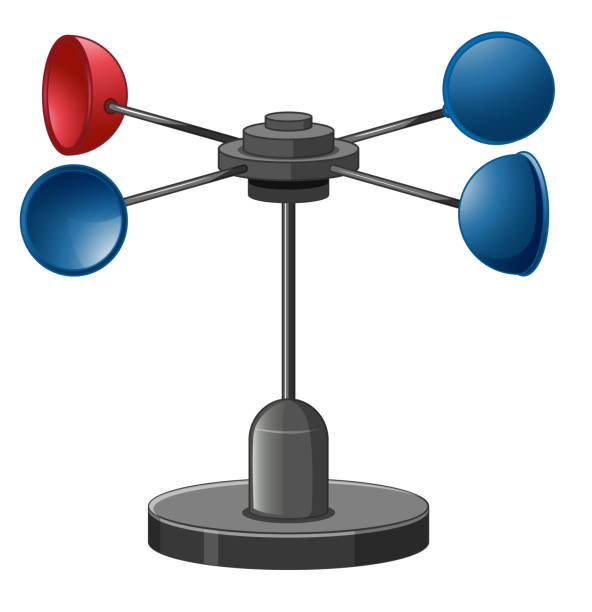The Duty of an Anemometer in Improving Security for Outdoor Activities
The Duty of an Anemometer in Improving Security for Outdoor Activities
Blog Article
All You Need to Find Out About Anemometers: Just How They Function, Why They Matter, and Where to Use Them
Anemometers, however frequently overlooked in the world of scientific instruments, play a crucial role in different areas, offering useful understandings right into wind speed and airflow patterns. As we dig into the ins and outs of anemometer technology, we will uncover the inner functions of these gadgets, their relevance, and the vital factors to consider when selecting the right anemometer for details applications.

Anemometer Essentials
A vital tool used to gauge wind speed and direction, the anemometer plays an important role in meteorology and various sectors. An anemometer typically is composed of 3 or 4 cups that rotate in the wind, a vane that points into the wind, and sensing units to track the turnings or activities. By determining the rotations or activities over a details amount of time, the anemometer can identify wind speed. The vane aids figure out wind direction by pointing right into the wind, offering useful information for climate projecting, air travel, maritime operations, environmental surveillance, and wind power applications.
There are different kinds of anemometers available, including mug anemometers, vane anemometers, hot-wire anemometers, and sonic anemometers, each with its one-of-a-kind features and applications. Cup anemometers are generally used for fundamental wind rate dimensions, while vane anemometers are preferred for directional measurements.
Principles of Anemometer Procedure
Structure on the foundational understanding of anemometer basics, the concepts of anemometer procedure illuminate the mechanics behind wind rate and instructions measurements. Mug anemometers, for circumstances, have three or even more mugs that capture the wind, triggering them to spin faster as the wind rate boosts. Hot-wire anemometers rely on a warmed wire that cools down as wind passes over it, with the price of cooling determining the wind rate.
Relevance of Anemometers
The significance of anemometers in weather forecasting and different industries can not be overemphasized. Anemometers play a critical function in gauging wind speed and instructions, supplying vital data for climate forecasting, environment studies, ecological monitoring, and aeronautics operations. Meteorologists count on anemometers to gather exact wind data, assisting them understand weather condition patterns, predict tornados, and problem prompt cautions to the public. In sectors such as building, agriculture, eco-friendly power, and maritime procedures, anemometers are used to maximize processes, make sure safety, and raise efficiency. For instance, wind ranch operators utilize anemometers to analyze wind conditions and maximize electrical energy production from wind turbines. In the maritime sector, anemometers aid ship navigating by giving real-time wind information to captains, assisting them make notified choices to make certain secure trips. Overall, anemometers are important devices that add dramatically to safety and security, performance, and informed decision-making in meteorology and a variety of industries.
Applications Across Various Industries
Applications of anemometers span throughout diverse markets, showcasing their flexibility and energy beyond meteorology. In the eco-friendly energy sector, anemometers play a crucial function in evaluating wind problems for wind farm positionings, guaranteeing optimum energy manufacturing. Industries like construction and mining make use of anemometers to keep track of wind rates, essential for safety and security procedures, specifically when operating at elevations or in open-pit mines where solid winds can position dangers. Anemometers are also important in the aviation market, assisting pilots in understanding airspeed and wind direction for secure liftoffs and landings. The maritime market take advantage of anemometers for ship navigation, assisting seafarers prepare for weather modifications and readjust routes accordingly. In farming, anemometers aid farmers in managing plant spraying by supplying real-time information on wind speed to prevent drift. Anemometers locate applications in Cooling and heating systems to optimize airflow and improve energy effectiveness in structures. The varied usage instances of anemometers underscore their significance across different markets, highlighting their vital duty in boosting functional security and effectiveness (anemometer).

Picking the Right Anemometer for Your Requirements
For general purposes, a cup anemometer is appropriate for determining wind speed, while a vane anemometer provides wind direction data. Hot-wire anemometers are ideal for low airspeed measurements, and ultrasonic anemometers provide high accuracy and resilience.

Verdict
In verdict, anemometers play a critical function in gauging wind rate and direction throughout different markets. It is important to think about the relevance of anemometers in order to make informed choices when choosing the most suitable gadget for gauging wind conditions.
There are various types of anemometers readily available, consisting of cup anemometers, vane anemometers, hot-wire anemometers, and sonic anemometers, each with its one-of-a-kind functions and applications. Mug anemometers are generally made use of for standard wind rate measurements, while vane anemometers are favored for directional measurements. Hot-wire anemometers are ideal for low airspeeds, and sonic anemometers are ideal for high-precision measurements in study and commercial setups.Structure on the fundamental understanding of anemometer essentials, the concepts of anemometer procedure illuminate the technicians behind wind rate and instructions dimensions. For basic objectives, a mug anemometer is ideal for gauging wind rate, while a vane anemometer a fantastic read supplies wind instructions information.
Report this page